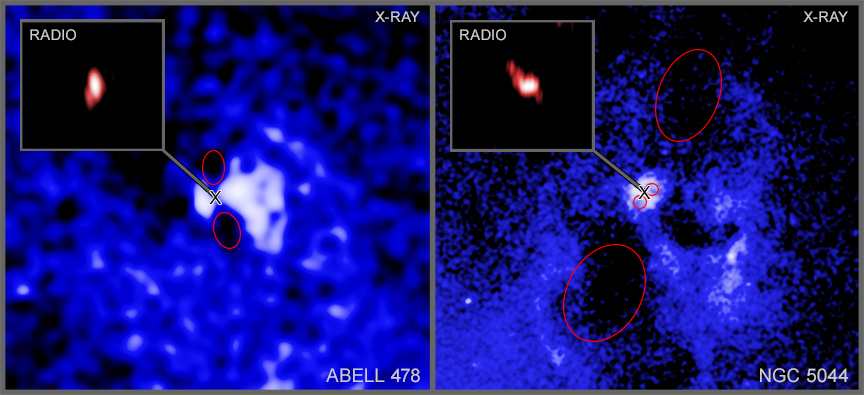The U.S. National Science Foundation National Radio Astronomy Observatory (NSF NRAO), in partnership with several leading Mexican universities and research institutes, has announced a series of landmark agreements and meetings aimed at advancing Mexico’s role in the Next Generation Very Large Array (ngVLA) project.
Recent News
Astronomers Discover a Superheated Star Factory in the Early Universe
Astronomers have uncovered a previously unknown, extreme kind of star factory by taking the temperature of a distant galaxy using the ALMA telescope. The galaxy is glowing intensely in superheated cosmic dust while forming stars 180 times faster than our own Milky Way.
Astronomers Share Largest Molecular Survey To-date: GOTHAM Legacy Data Goes Public
Astronomers in the “GBT Observations of TMC-1: Hunting Aromatic Molecules” research survey, known as GOTHAM, have released a spectral line survey with largest amount of telescope time ever conducted, charting more than 100 molecular species only found in deep space.
Spotted: ‘Death Star’ Black Holes in Action

Huge black holes are firing powerful beams of particles into space — and then changing their aim to fire at new targets. This discovery, made using NASA’s Chandra X-ray Observatory and the U.S. National Science Foundation (NSF) National Radio Astronomy Observatory’s (NRAO) Very Long Baseline Array (VLBA), shows what kind of widespread impact black holes can have on their surrounding galaxy and beyond.
A team of astronomers looked at 16 supermassive black holes in galaxies surrounded by hot gas detected in X-rays by Chandra. Using radio data from the VLBA, operated by the National Radio Astronomy Observatory, they studied the directions of beams — also known as jets — of particles fired a few light-years away from the black holes. This gives the scientists a picture of where each beam is currently pointed, as seen from Earth. Each black hole fires two beams in opposite directions.
The team then used Chandra data to study pairs of cavities, or bubbles, in the hot gas that were created in the past by the beams pushing gas outwards. The locations of large outer cavities indicate the direction those beams pointed millions of years earlier. The researchers then compared the directions of the radio beams with the directions of the pairs of cavities. Read the full release.
This news article was originally published on the NRAO website on May 22, 2024.
Recent News
NSF National Radio Astronomy Observatory and Mexican Institutions Sign Historic Agreements to Advance ngVLA Collaboration
The U.S. National Science Foundation National Radio Astronomy Observatory (NSF NRAO), in partnership with several leading Mexican universities and research institutes, has announced a series of landmark agreements and meetings aimed at advancing Mexico’s role in the Next Generation Very Large Array (ngVLA) project.
Astronomers Discover a Superheated Star Factory in the Early Universe
Astronomers have uncovered a previously unknown, extreme kind of star factory by taking the temperature of a distant galaxy using the ALMA telescope. The galaxy is glowing intensely in superheated cosmic dust while forming stars 180 times faster than our own Milky Way.
Astronomers Share Largest Molecular Survey To-date: GOTHAM Legacy Data Goes Public
Astronomers in the “GBT Observations of TMC-1: Hunting Aromatic Molecules” research survey, known as GOTHAM, have released a spectral line survey with largest amount of telescope time ever conducted, charting more than 100 molecular species only found in deep space.
